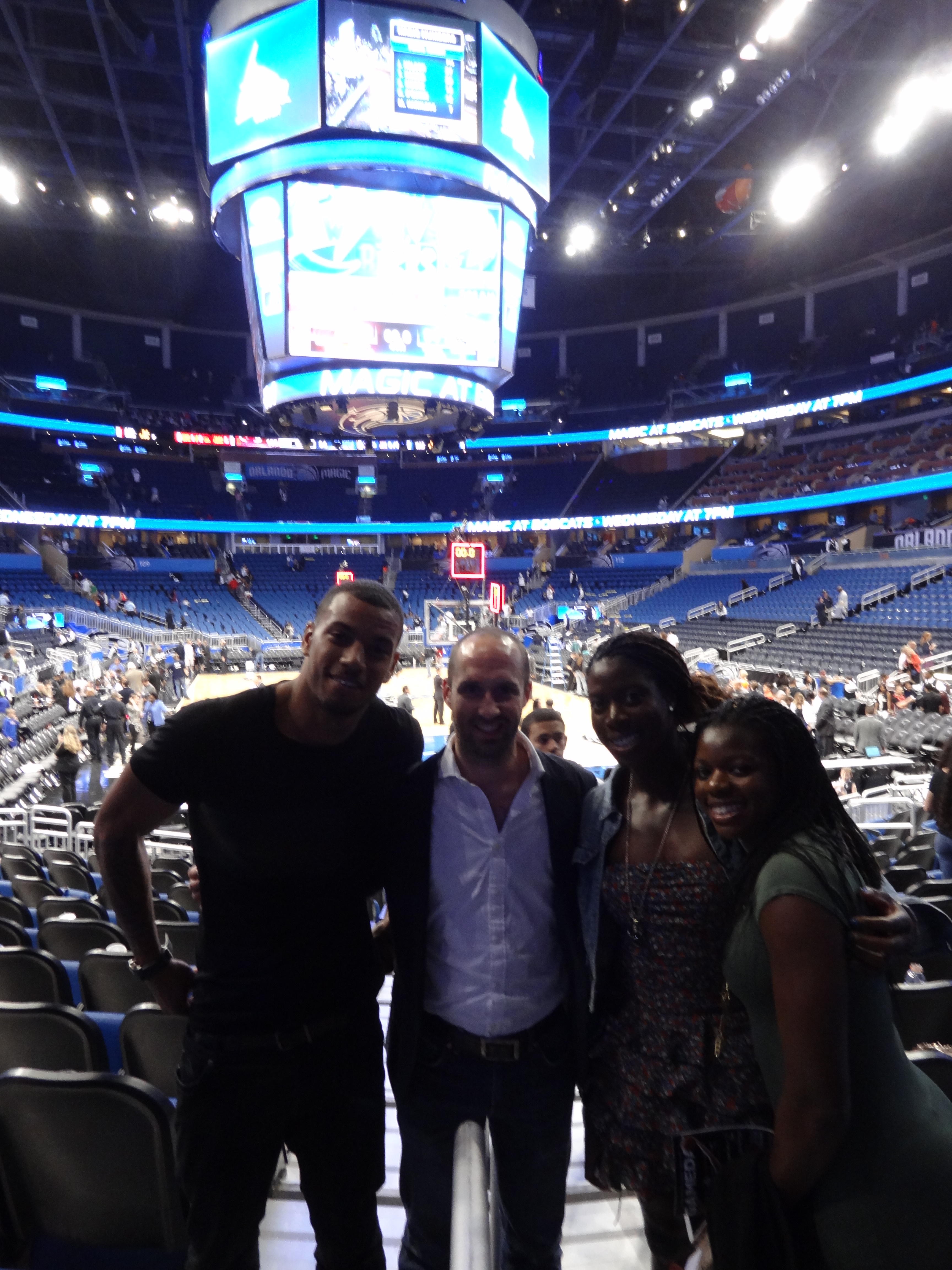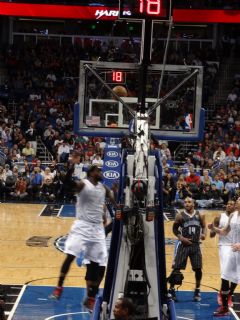On Monday night, thanks to Ricky Simms (Chrissy's agent), Adidas & the NBA, Chrissy, Asha (Philips), Alex (Alameen) & myself were guests at the Orlando Magic vs Miami Heat game.

The game transpired to be the last game in the Heat's 27 game winning streak, which is the second longest in NBA history & was a great experience for us all. Since then, the whole group has been absorbed in the basketball games on the TV each evening...NBA or NCAA March Madness, we're not fussy!!
From a sports physiotherapy perspective, the camp has been a good opportunity to work closely with Lloyd (Cowan) to develop strength programmes for the younger athletes, educate them on their self-conditioning routines, maintain the senior athletes & review the rehabilitation schedules of those returning from injury.
One of the rehabilitation sessions I have introduced for an athlete returning from an Achilles tendinopathy has focussed on the strength & stability of the foot & ankle complex.
Too often the strength of the feet & stability of the ankles are overlooked, even in healthy athletes, which has direct influence on performance, given that the feet are the contact points with the ground.
I have taken inspiration for many of my foot & ankle conditioning programmes from dancing disciplines such as ballet, winter sports & of course, track & field coaches. Recently, I came across a video (see below), filmed by a group I was first made aware of when talking to Pittsburgh Steelers' Troy Polamalu, the Sport Science Lab. I love the ingenuity of the exercises & the innovation in creating specific tools for challenging the feet in a unique way. Have a look & see what you think!!!
Another interesting blog post I have read this week, explains why tendon loading protocols work to improve stiffness of the myotendon unit & increase the ability of the complex to transfer energy. The blog post, written by Josh Stone, can be found by clicking the link below:
Meanwhile, a recent paper published in the Scandinavian Journal of Medicine & Science in Sports by Wang et al (2012), illustrates the implications of reduced myotendon stiffness on explosive performance as well as clinical severity in athletes suffering from Achilles tendinosis.
The authors established the extent of altered viscoelastic tendon properties in 17 athletes demonstrating unilateral, chronic mid-portion Achilles tendinopathy & then correlated hysteresis with soleus voluntary electro-mechanical delay & hopping distances. They concluded that tendons displaying altered viscoelastic properties resulting from tendinopathy had a detrimental performance effect on explosive tasks in male athletes.
Click on the link below to read the abstract:
One final recommended paper for the week in relation to the rehabilitation of tendinopathies, is published this coming month in Sports Medicine & is co-authored by my business partner, Henning Langberg. The review paper compares the clinical outcomes of various approaches to rehabilitation, specifically the eccentric programmes in comparison to isotonic programmes & combined eccentric/isotonic programmes.
This is of particular interest to me as I feel that tendon rehabilitation programmes are often prescribed by sports physiotherapists without understanding the rationale behind why they are effective & furthermore why certain programmes might fail to achieve the desired results in certain clinical presentations. Too often, eccentric rehabilitation protocols are advised without applying clinical reasoning in relation to the nature of the tendinopathy.
Malliaris et al (2013) reviewed 32 studies, with ten comparing loading programmes & 28 investigating at least one potential mechanism for effectiveness. The conclusion was that there is a paucity of clinical & mechanistic evidence to support exclusively eccentric protocols, whilst several potential mechanisms, such as neural adaptation & central nervous system changes have not been investigated.
Click on the link below to read the abstract:
Hopefully the clinical reasoning around those tendinopathy presentations that prove resistant to rehabilitation & become persistently recurrent, might be enhanced by supplementing current knowledge with the above resources, in addition to other blogs I have posted on the topic.

